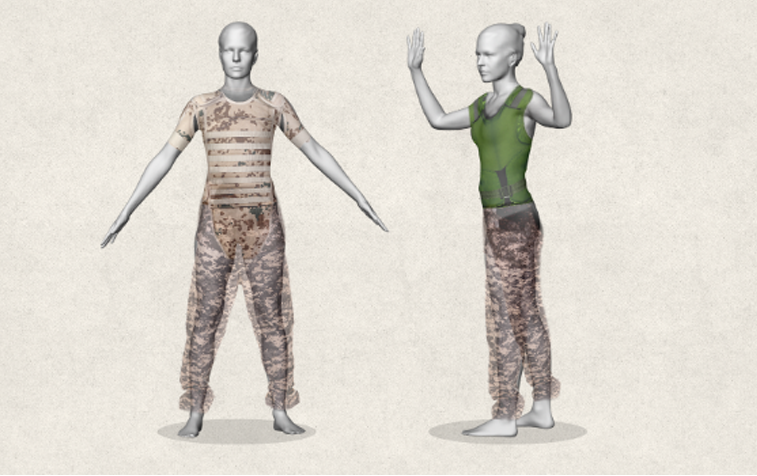
December 15, 2014 Designing for Combat
UNDERSTANDING OUR SOLDIERS’ SHAPE
“Everything a Warfighter wears, carries, flies, drives, rides in, works in, and sleeps in depends on anthropometry.”*For the US military, it’s incredibly important that soldiers have the best-fitting clothing and equipment to maximize their protection and performance. But, people come in a diverse range of shapes and sizes, and each soldier must be properly equipped without spending a fortune on individually customized gear. Body Labs has a solution and it was born at Brown University.
BROWN UNIVERSITY X US MILITARY
Dr. Michael Black and Alex Weiss, co-founders of Body Labs, became involved with the Army in 2009 while they were at Brown University developing the body model. At this time, the Army was designing new body armor as the existing armor was failing to comfortably fit female soldiers. Women have fundamentally different torso shapes than men — in general, their torsos are much shorter and smaller — yet they were wearing the same size ceramic inserts in the body armor as the men. As a result, these ceramic inserts would dig into the women’s thighs when they were sitting, causing a decrease in their leg circulation in addition to a lot of discomfort.
To solve this issue, the Army wanted to find a way to design armor that would better fit male and female soldiers, instead of just a small set of the population. The Army was in the middle of collecting scans of their soldiers, so in the meantime, the team at Brown undertook a project to figure out how to “register” scans. That is, they wanted to put all the bodies into the exact same pose to enable accurate statistical analysis.
With this project, the Army was a step closer to improving the design of soldier equipment and it played an integral role in the development of Body Lab’s tech.
BODY LABS X US MILITARY
Fast forward several years… the Army has collected body, head and foot scans of 12,000 male and female soldiers, and Body Labs is commercializing the body model technology developed at Brown.
Now, Body Labs can provide an even more-detailed analysis for the Army, ensuring that soldiers not only wear better-fitting uniforms, but also that anything designed around a body (such as equipment, body armor, workstations, aircraft and ground vehicles) accommodates the diverse shape of the armed services.
Using the academic research from Brown, Body Labs can give the Army a software engine to create 3D body models from scans. These models can then be posed (e.g., aiming a weapon while dressed in armor), be used in CAD software for product design, and provide a visual of what a body in the 5th or 95th percentiles of the soldier population would look like. This last point is particularly important for products since it’s necessary to design around the extremes of the population. With body models, designers and engineers will have a visual of the all different types of bodies that lie in these extremes and thus can fit the largest group within this percentile. For example, bodies in the 95th percentile of a population might all have the same height and weight, but their proportions and shapes can vary tremendously within these parameters.
With body models and the statistics and visuals gleaned from them, soldiers of all shapes and sizes can now be accounted for.